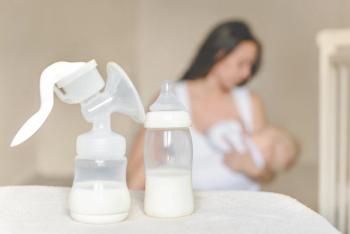
Research from the Developing Brain Institute found maternal psychological distress during the COVID-19 pandemic had disrupted critical processes of fetal brain development.


Research from the Developing Brain Institute found maternal psychological distress during the COVID-19 pandemic had disrupted critical processes of fetal brain development.

Significant racial and ethnic disparities exist in the management of postdural puncture headache with an epidural blood patch among obstetric patients, according to a New York State study published in JAMA Network Open.

Local community needs for obstetric care trump financial viability and staffing challenges at rural hospitals, according to a national survey in JAMA Health Forum.

Tracy MacNeal, president and CEO of Materna Medical, sits down to discuss the company's recently FDA-cleared Milli Vaginal Dilator for vaginismus and associated dyspareunia, as well as a potential new use for the device currently being studied.

Investigators may have found a piece of the puzzle into what causes sudden infant death syndrome.

Intravenous immunoglobulin shows promise as a treatment option for pregnant patients with SARS-CoV-2, influenza, and other respiratory viruses.

Recommendations are often vague, contradictory, according to investigators.

Diagnosis, management imperative for gestational hypertension and preeclampsia.

Active immunization of pregnant women with investigational vaccine protected infants from RSV from birth through at least 6 months.

When helping patients in the hardest moments of their lives, it is important to have empathy for them—and for ourselves.

Catherine Cansino, MD; Andrea Braden, MD; and Lisa Foglia, MD, spoke on how Metrics, wellness models, and management change are essential to advancing diversity, equity, and inclusion (DEI) in obstetrics and gynecology at the 2022 ACOG Annual Clinical & Scientific Meeting.

In this EdTalk, presented at the 2022 American College of Obstetricians & Gynecologists' Annual Clinical & Scientific Meeting, Lisa Foglia, MD; Andrea L. Braden, MD; and Catherine Cansino, MD, MPH, discuss strategies for improving diversity and equity within obstetrics and gynecology.

The FDA recently issued a statement warning the public of the risks and potential false results obtained with noninvasive prenatal screening tests, noting that inappropriate usage and interpretation has resulted in improper medical decisions.

The use of labor neuraxial analgesia for vaginal delivery was associated with a 14% decrease in the risk of severe maternal morbidity (SMM), including postpartum hemorrhage (PPH), compared to vaginal delivery without neuraxial analgesia, according to a study published in JAMA Network Open.

A retrospective cohort study published in JAMA found that pregnant and postpartum women with SARS-CoV-2 infection were at a significantly increased risk of maternal mortality or serious morbidity from common obstetric complications.

An integrated model for prenatal care that incorporates both virtual and in-person visits has been well-received by patients and health care providers alike, according to a review in the Journal of Midwifery & Women’s Health.

A study published in American Journal of Preventive Medicine compared prenatal care in women with various disabilities.

From SMFM, a visual summary of Consult #60.

This Consult discusses the management of pregnancies achieved with in vitro fertilization and provides recommendations based on the available evidence.

An analysis of more than 100 mother-child pairs from Colorado found children with fetal exposure to cannabis had increased fat mass and fasting glucose levels compared to their counterparts without fetal exposure to cannabis.

For extremely preterm infants, mother’s own milk may be helpful for preventing poor postnatal growth and some morbidities.

Bilateral oophorectomy is associated with an increased risk of dementia, according to findings from a prospective cohort study in the journal Menopause.

This Consult has been endorsed by the American College of Obstetricians and Gynecologists (ACOG) and replaces the Society for Maternal-Fetal Medicine's (SMFM) Statement #4, Implementation of the use of antenatal corticosteroids in the late preterm birth period in women at risk for preterm delivery, August 2016.

Evidence indicates that a delay in umbilical cord clamping leads to better outcomes for infants. What are the outcomes for those who are very preterm?

Substance use disorder may prove to be a significant issue for some mothers. In this article, experts discuss a case of addiction in pregnancy, analyzing the patient's medical history and psychosocial state.